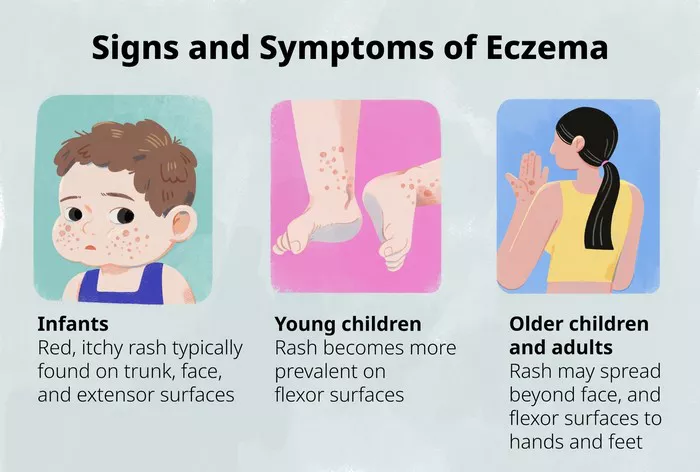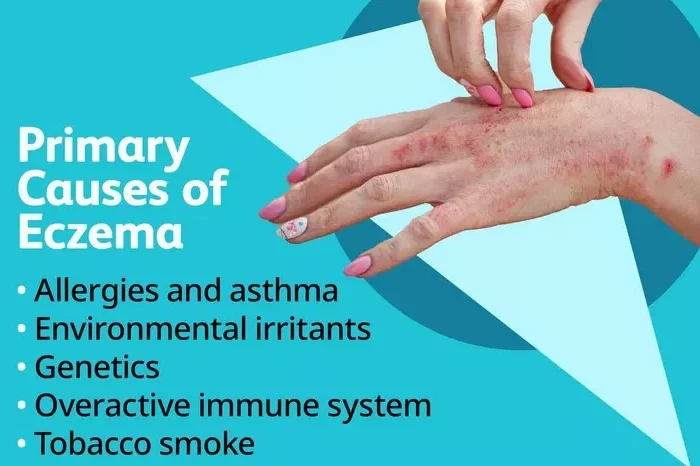Eczema, also known as atopic dermatitis, is a chronic skin condition that affects millions of people worldwide. Characterized by inflammation, redness, and itching, eczema can significantly impact the quality of life for those who experience its symptoms. In this comprehensive article, we will delve into the intricacies of eczema and focus on three key symptoms that are indicative of this condition.
Understanding Eczema: A Brief Overview
Before we explore the symptoms, it’s essential to have a basic understanding of eczema. Eczema is a multifaceted skin disorder that is often influenced by genetic and environmental factors. It typically begins in childhood but can persist into adulthood or even develop later in life. The skin of individuals with eczema tends to be more sensitive and prone to inflammation, making them susceptible to various triggers.
Now, let’s turn our attention to the three primary symptoms that are commonly associated with eczema.
1. Intense Itching: The Unrelenting Urge
One of the hallmark symptoms of eczema is intense itching, medically known as pruritus. Individuals with eczema often describe the itching sensation as unbearable, leading to frequent scratching. This itching can be particularly problematic during flare-ups, which are periods when eczema symptoms worsen.
The itch-scratch cycle plays a pivotal role in eczema, as scratching can further irritate the skin, leading to more inflammation and potential infection. Understanding the mechanisms behind itching in eczema is crucial for effective symptom management.
The exact cause of itching in eczema is complex and multifactorial. It is thought to result from a combination of immune system dysfunction, genetic predisposition, and environmental factors. Dry skin, a common feature of eczema, can exacerbate itching, creating a cycle that is challenging to break.
Managing itching in eczema involves a multifaceted approach. Moisturizing the skin regularly, using prescribed topical corticosteroids or immunomodulators, and identifying and avoiding triggers can all contribute to alleviating this persistent symptom. Moreover, antihistamines may be recommended to help break the itch-scratch cycle and improve the overall quality of life for individuals with eczema.
2. Red and Inflamed Skin: The Visual Signature
Another prominent symptom of eczema is red and inflamed skin. During eczema flare-ups, affected areas of the skin become visibly red, swollen, and may develop small, fluid-filled blisters. This inflammatory response is a result of the immune system reacting to perceived threats, such as allergens or irritants.
The appearance of red and inflamed skin is often distressing for individuals with eczema, as it can be cosmetically displeasing and contribute to feelings of self-consciousness. Understanding the triggers that lead to inflammation is crucial for managing this symptom effectively.
Common triggers for skin inflammation in eczema include exposure to allergens, such as pollen, pet dander, or certain foods, as well as contact with irritants like harsh soaps or fabrics. Environmental factors, such as extreme temperatures or low humidity, can also contribute to skin inflammation in individuals with eczema.
Treatment strategies for red and inflamed skin involve a combination of topical medications, lifestyle modifications, and environmental adjustments. Topical corticosteroids and calcineurin inhibitors are commonly prescribed to reduce inflammation, while maintaining proper skincare practices and identifying and avoiding triggers play a pivotal role in preventing flare-ups.
3. Dry and Flaky Skin: The Consequence of Impaired Barrier Function
Dry and flaky skin is a pervasive symptom in individuals with eczema and is often linked to impaired skin barrier function. The skin’s barrier is compromised in eczema, making it more susceptible to moisture loss and external irritants. This leads to dryness, roughness, and the development of fine scales or flakes on the skin surface.
The impaired skin barrier in eczema is a result of genetic factors that affect the production of essential proteins and lipids responsible for maintaining skin integrity. Additionally, environmental factors, such as exposure to harsh chemicals or frequent bathing, can exacerbate dryness and flakiness.
Managing dry and flaky skin in eczema involves a two-pronged approach: repairing the skin barrier and preventing moisture loss. Emollients and moisturizers are essential components of eczema management, as they help lock in moisture, soothe dry skin, and improve the overall texture of the skin. Using fragrance-free and hypoallergenic skincare products is recommended to minimize the risk of irritation.
In severe cases of eczema, healthcare providers may prescribe barrier repair creams containing ceramides, cholesterol, and fatty acids to enhance the skin’s natural protective barrier. Additionally, avoiding long, hot showers, using gentle cleansers, and patting the skin dry instead of rubbing can contribute to maintaining optimal skin hydration.
Conclusion
Eczema is a chronic skin condition that manifests in various ways, affecting individuals both physically and emotionally. Understanding and identifying the key symptoms, such as intense itching, red and inflamed skin, and dry and flaky skin, is crucial for effective management and improving the quality of life for those living with eczema.
As we continue to unravel the complexities of eczema, ongoing research and advancements in treatment options offer hope for better symptom control and, ultimately, a higher quality of life for individuals affected by this common skin disorder. By addressing the underlying causes, implementing targeted therapies, and adopting proactive skincare practices, we can empower individuals with eczema to better manage their symptoms and achieve healthier, more resilient skin.

























